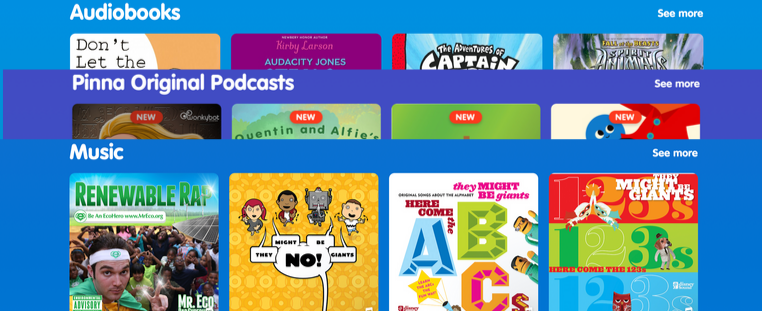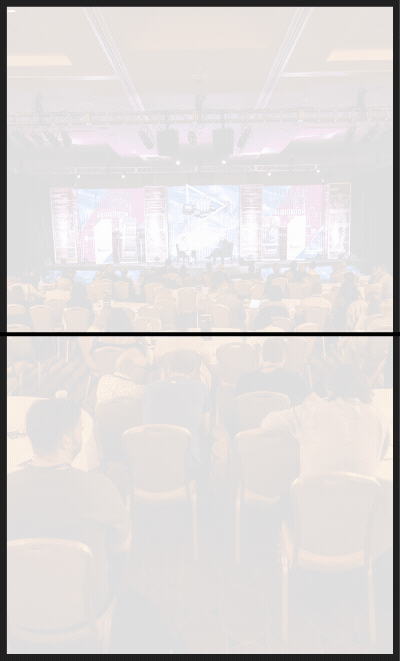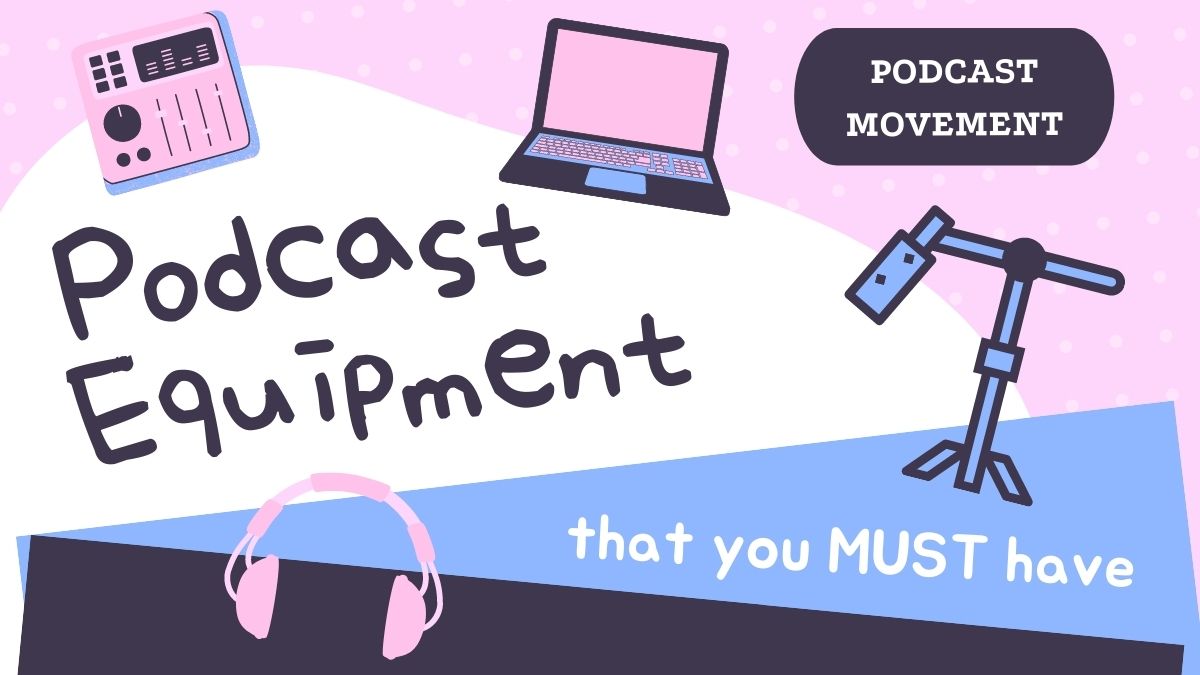Maggie McGuire, the CEO of Pinna, is all about blazing new territory. Since taking the wheel of the company in January, the former Scholastic executive has set a high bar for children’s audio. What began as a pilot project at Panoply Media (now Megaphone) is now a standalone company that has grown into a successful resource for parents and educators. PodMov Daily spoke to the CEO about Pinna’s development, its niche in the audio market, and marketing strategy.
![]()
What is Pinna and how does it fit into the podcasting space?
McGuire describes Pinna as the first audio-streaming service for kids that combines podcasts, audiobooks, and music, with several key details. It officially launched early this year, offering a completely ad-free interface without screen interaction. Geared toward children ages 3 to 12, all of the content is curated into easily accessible categories. The service offers monthly and yearly subscriptions.
![]()
How did the idea behind Pinna materialize?
Andy Bowers, now the chief creative officer of Megaphone, has been involved in audio entertainment since 1983. In 2017, he started Pinna as a response to a gap in the market. Bowers “had been living and breathing in the adult side of the podcast space for so many years,” explains McGuire. “In all of those years, he became more cognizant that no one was really doing podcasts at this scale for kids.”

Once she joined the “test case,” McGuire saw enormous potential: “I was super intrigued by what they were doing […] I’ve been in this business for over 20 years and have a deep understanding of the children’s audio space. It’s bigger than a podcasting service for kids. I was using my background in marketing, understanding the needs and wants of parents and teachers.”
“The first thing we set out to do before launching the product was to talk to our customers — customers that are going to make decisions about purchasing on behalf of their kids,” explains McGuire. The company performed quantitative research with 1,012 moms, asking questions about listening habits and consumption. Where did audio fit into their daily lives?
![]()
Which demographics make up Pinna’s target audience?
The parenting and childhood education spheres are Pinna’s primary audience. Its “palatable” price point makes it an attractive option for the many caretakers trying to reduce screen time. As McGuire puts it, the Pinna customer has specific needs. “It always comes down to this: Please make it easy for me to discover and access the very best content that I can provide my child,” she says.

Parents value the work put into the award-winning platform, which is certified COPPA (Children's Online Privacy Protection Rule) compliant. Assurance of safe content is an enormous relief in itself. “Once the service [is] enabled, you can hand your smartphone or your tablet to your young child and feel really good about that,” McGuire reasons. “They’re not going to bump into anything that’s inappropriate or not designed specifically for them.”
![]()
How does the company approach the paid subscription model?
Paying to avoid advertising to children is an industry no-brainer, according to Pinna. The market agrees, and customers do, too. When developing Pinna, the team directly asked their target audience, “What would compel you to want to subscribe to a service like this?”
Another aspect that influenced the model was its lack of precedent. “There hadn’t been 10 to 15 years of a podcast business built up around an ad-based business for kids, like there already did exist for adults,” says McGuire. “It wasn’t as much of a paradigm change.”
![]()
How does Pinna focus its advertising? On which audio platforms do you run sponsorships?
With children’s programming, it’s vital to communicate just the right message to parents. “All of the insights we gained through research definitely shaped our market strategy from a content development point of view, an acquisition point of view, for marketing — how we’re positioning the product,” McGuire says.
“We’re actively marketing across omnichannel digital channels like social media, paid search, all of the Google, Apple Play, and Amazon app stores,” she specified. Pinna capitalizes on word-of-mouth as well. The company has an influencer program made up of “ambassadors that truly love the brand.”

Within the audio world, campaigns are going strong. “You’ll start to hear Pinna advertising roll out across podcasts with a high listenership with women that are 25 to 45, who may be moms of young children,” McGuire plans. “We’re running advertising across audio networks including Spotify, Pandora, and NPR, and across podcast networks like Megaphone and Midroll.”
![]()
What are the discoverability challenges of children’s audio? How do you focus your advertising outside the podcast space to parents that might not be familiar with audio content as an option?
“The parenting and educational space is so crowded,” McGuire says knowingly. She says that parents and teachers overall are just now becoming aware that there are podcasts being developed for kids. “But where do I find them? There’s a podcast app on my phone?” she laughs. It’s true — unless you’re an avid podcast listener already, “this idea of having to hunt for three kinds of content across the audio universe just makes it too difficult.”

Households are inundated with product advertising. Pinna’s team knows that new services need to stand out. They need to be “appealing to the things that are most important to families on behalf of their kids,” McGuire says. “To do that, we need to break out. Not only do you have to be prepared to step into the market with a very clear value proposition, but we also have to educate our consumers.”
![]()
While there are other audio platforms for children, Pinna has broken ground with its structure and offerings. Why hasn’t this been done before?
“The audio space for kids has been overlooked for a number of years. It’s a small portion of larger media businesses’ revenue — it’s important, but it isn’t the driver of revenue for most big businesses yet,” says McGuire.
“And why is it now that it’s making sense? Technology disruptors like smart speakers, smart cars, and eventually smart homes have created this audio renaissance. All of a sudden, all things audio are easily accessible and intriguing, entertaining. It’s a convergence, the perfect storm.”




Join the Movement